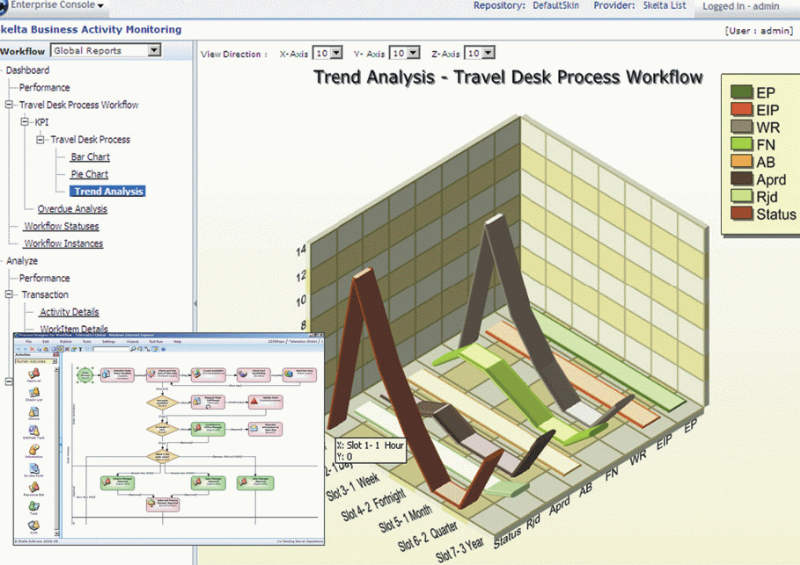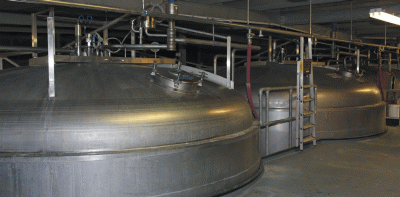 Workflow software was once considered a beneficial optional extra, but now, according to Paul Alcock, pre-sales technical consultant at Wonderware UK, a business unit of SolutionsPT, it is a crucial tool for decision making in the process industry. Here he explains why…
Workflow software was once considered a beneficial optional extra, but now, according to Paul Alcock, pre-sales technical consultant at Wonderware UK, a business unit of SolutionsPT, it is a crucial tool for decision making in the process industry. Here he explains why…
The transition from paper-based workflow management to digital decision making has been an important step for process-based businesses. Workflow allows such companies to manage the flow of information and ensure that each operation has been completed correctly, at the right time and in the right sequence. In the event of deviation from plan, it also ensures that the action is authorised by someone with an appropriate level of responsibility. This can reduce downtime and improve quality by establishing clear chains of action in the event of a problem.
For example, if an operator is using a piece of machinery and something goes wrong or there is a quality issue, he or she may lack the skills or level of authorisation to fix the problem. Good workflow would guide the operator through the process of finding the right person to help them solve it or deal with it on their behalf.
Automated workflow software, such as Wonderware’s ArchestrA Workflow, which can stand alone or interface with the company’s System Platform product, deals with the process, initiating the workflow and ensuring that the procedure is followed. The software is a BPM (Business Process Management) application that captures and enforces operational processes across business and production systems to automate the response to process exceptions. At its best, it removes the opportunity for human failure from the chain of command.
With well written and effective workflow software this process can be as invisible or as visible as you want it to be. For instance, the ArchestrA Workflow’s graphical flow chart is easy to change and manage and can be at the forefront of the graphical interface or an invisible foundation for it.
Workflow software integrates work instructions right down to the operational level, providing step by step information as to how to proceed with any manufacturing process. It can interface with scheduling and e-mail software, and plant maintenance and other plant systems to achieve its objectives within a workflow orientated environment.
For example, a HMI on the plant floor interfaces with the work flow product in the event of a problem and e-mails the quality manager. If the quality manager doesn’t respond within a set timeframe, this could be escalated to a higher level. Equally, the initial alarm could be managed in relation to a group of people with sufficient responsibility to deal with it, rather than rely on one individual.
 Similarly, the system could also notify the engineering manager, who would send an engineer. If a repair is required, and the engineer making the repair has to order parts, ArchestrA Workflow will notify the upstream and downstream processes, such as warehousing and packaging, that there is going to be a delay. By sharing information and allowing everyone involved to make the decision to move production into another line if required, line flexibility is improved.
Similarly, the system could also notify the engineering manager, who would send an engineer. If a repair is required, and the engineer making the repair has to order parts, ArchestrA Workflow will notify the upstream and downstream processes, such as warehousing and packaging, that there is going to be a delay. By sharing information and allowing everyone involved to make the decision to move production into another line if required, line flexibility is improved.
Typical applications for workflow software include materials quarantine, escalation of incoming materials inspection to respond to quality or performance issues and corrective or preventative action enforcement, responding to unscheduled downtime or other unplanned plant activity.
The growing importance of workflow automation to plant operators and engineers was highlighted recently by Bob Mick from the ARC Advisory Group. He said: “This is primarily due to their increased responsibility for compliance, quality and tracking, as well as knowledge capture. Wonderware’s unique approach of embedding workflow software within its ArchestrA technology enables customers to implement standard operating procedures and corrective actions, basically structuring repeatable, managed responses to process exceptions across the enterprise… For most customers, a workflow application should help reduce delays in responding to abnormal events, thereby significantly increasing productivity,” concluded Mick.
As the process industry evolves, there will be a greater need for automated workflow software. In the current economic climate companies are going through restructuring processes resulting in de-skilling – which is stripping away some of the ability to simply deal with problems. However, more important is the fact that workflow software can itself evolve hand in hand with the company.
Also, because ArchestrA is SCADA based, it can interface with the countless control systems and devices that might be used on individual pieces of equipment in the plant. As a result, you never have to strip out the existing systems and start again.
Good workflow software is about taking the process control structure to the next level, not replacing the control systems that already exist. Flexibility, plant wide communication and systems that are as human-error proof as possible are just the start.

